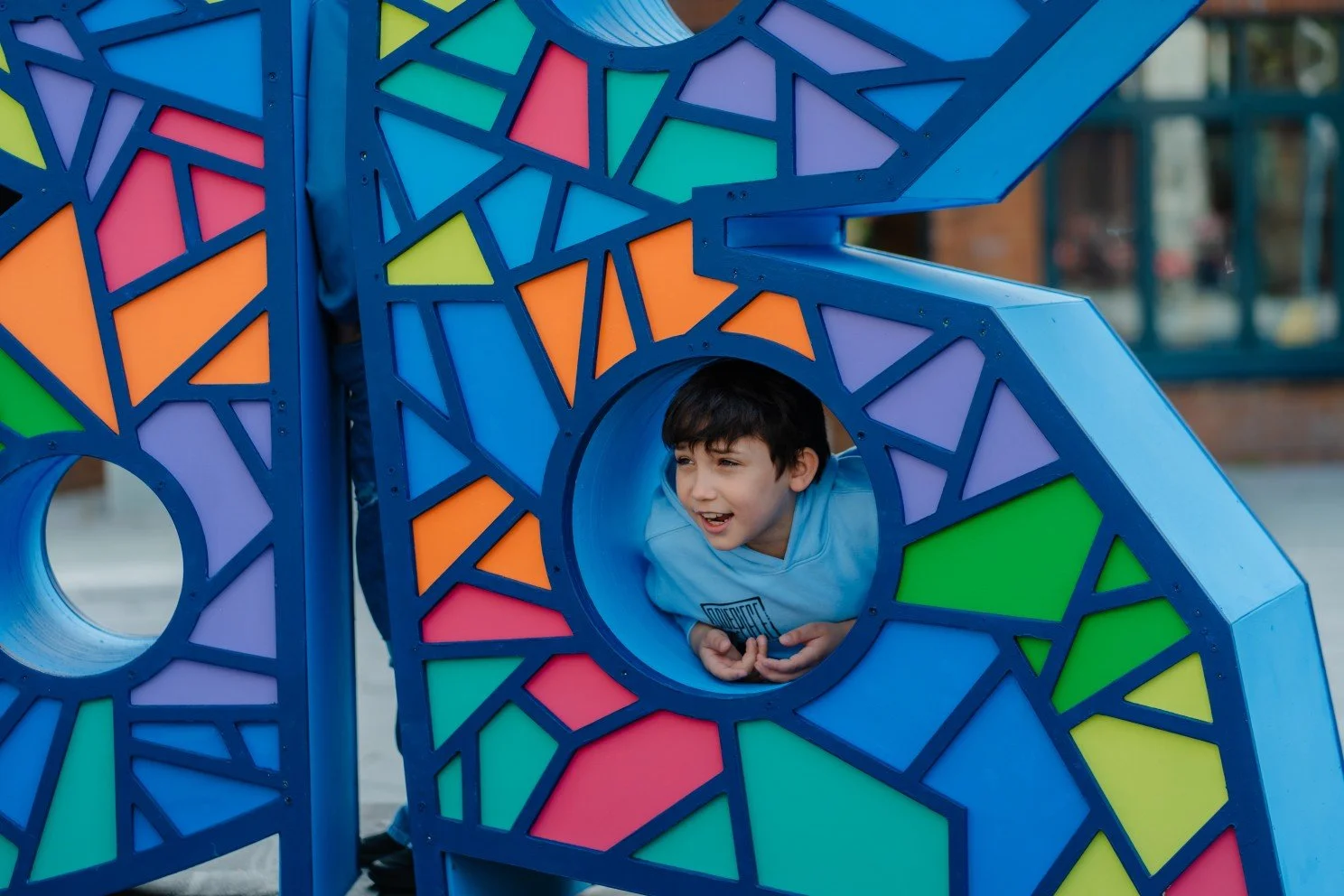10 Questions with Yiyang Chen
Yiyang Chen (she/they) is a PhD candidate in fine art at the Glasgow School of Art and an artist working across painting, moving images, ceramics, performance and writing. Delving into themes such as the monstrous, feminism, the erotic, flux, touch, gaze, the archive, and the non-binary, Yiyang Chen's research and practice explore the liveness and fluidity of bodies and material. Yiyang Chen holds a BA from the Luxun Academy of Fine Arts (China) and an MA from the Glasgow School of Art. Yiyang Chen's works developed through research in practice are highly regarded and have been exhibited internationally. In 2022, Yiyang Chen showcased films and installations that examined and challenged the digital representation of East Asian women's body image at my solo exhibition Someday Somehow in SaltSpace Gallery(Glasgow). Most recently, Yiyang Chen's video work Myths of Disavowal (2024) was featured at Spanning Deltain the PAKD Gallery Berlin.
Yiyang Chen - Portrait
ARTIST STATEMENT
Yiyang Chen works across painting, moving images, ceramics, performance and writing. Yiyang Chen explores the monstrous, feminism, the erotic, flux, touch, gaze, the archive, and the non-binary. Engaging with Laura Mulvey's and Paul B. Preciado's critiques of Freudian psychoanalytical theories through the lenses of feminism and transgender studies, Yiyang Chen's work parodies a "becoming" that challenges the epistemic regimes of sex, gender, and sexuality. It is a force that disturbs identity, system, and order, which does not respect borders, positions, rules, the in-between, the ambiguous, and the composite.
The Maid, The Bride, The Body, live performance, 22min, 2022 © Yiyang Chen
INTERVIEW
Let's start with your journey—how did you develop into the artist you are today?
I've always been drawn to painting—whether it's for the art itself or just for fun. As an artist who actively engages with feminism and queer studies, people sometimes assume I have a complicated relationship with my dad, kind of like what Freud might say. But actually, my dad is an amazing painter. He's incredibly dedicated to his craft, and he had a hugeimpact on me, especially when I was younger. He taught me to trust my instincts and to play around with whatever materials I could find—whether it was paper, mud, snow, or clay—anything that sparked my curiosity and made me want to create. I know being a woman, a painter, and a painter's daughter comes with its own challenges. For me, painting feels like this weight I've inherited—something that blends personal struggles with artistic tradition, all while navigating the tension between the personal and the collective, the self and family, the traditional and the modern, the East and the West.
Your practice spans multiple mediums, from painting to performance and moving images. How do you decide which medium best suits a particular idea or project?
I don't choose a medium to fit a specific idea. Instead, my hand-touch sensibility leads me to the material that feels most in tune with what I'm trying to express. This process is really tied to my exploration of the body, the self, that in-between space, and the speculative. Right now, my painting is a way to gesture and record physical interactions through marks and flow—driven by the way oil paint penetrates the surface and my impulsive performative nature. I approach painting with a wider perspective—it might transform into moving images or performance, but it's still grounded in my exploration of surfaces and the intimacy between materials: the canvas and brushstrokes, my hands and my body. My work examines how skin, canvas, and clay respond to the expressive potential of the body and its interactions with the world, exploring how bodily sensations and desires are socially and spatially constructed.
404 Fantasy, Oil on canvas, knit pieces, glazed stoneware, fabric, 141x183 cm, 2022 © Yiyang Chen
As If I Am Invisible, oil on canvas, knit pieces, glazed stoneware, 126x83 cm, 2022 © Yiyang Chen
Your work engages with themes of the monstrous, flux, and the non-binary. What draws you to these concepts, and how do they shape your artistic exploration?
I am intrigued by the concept of the "monstrous feminine," which shows up in figures like the Sphinx, the Sirens, Medusa, the two-mouthed monster Futakuchi-onna from Japanese mythology, and even in the Confucian-inspired fictional world in the Chinese myth collection Liaozhai zhiyi, where entities take on female or non-binary forms, seducing and killing through metamorphosis. In art history, women's bodies are often represented in ways that play into misogynistic and voyeuristic myths from both the East and the West, turning women into monsters by exposing their so-called horrific appearances and shape-shifting forms. In her essay Dirt and Desire: The Phenomenology of Female Pollution in Antiquity, Anne Carson argues that myth creates a logic where women's boundaries are fluid, porous, and ever-changing. "Her power to control them is inadequate, her concern for them unreliable. Deformation attends her. She swells, shrinks, leaks, is penetrated, and suffers metamorphosis. The women of mythology regularly lose their form in monstrosity." My work digs into this monstrous side of things—where the "body" gives shape to an idea that's inherently formless, turning into an abstract assemblage. I look at bodies that refuse to stick to a fixed narrative, staying indecipherable and rejecting any binary labels.
Your research incorporates feminist and transgender critiques of Freudian psychoanalysis. How do these theories influence your creative process and the narratives you construct?
My research is grounded in a queer feminist critique of psychoanalysis, challenging its historical role in upholding racial and sexual hierarchies—particularly those that marginalise women, trans, intersex, and non-binary people. It seeks to disrupt the narrative conventions imposed on transsexuality by engaging with Eva Hayward's concept of the "transpositional," which attends to the material and sensual dimensions of transitioning beyond purely identitarian frameworks. Through my practice, I explore the formation of the self—material, psychical, sensual, and social—via corporeal, spatial, and temporal processes that reshape the lived body. This approach echoes the legacy of 1970s feminism, which illuminated how a generation of women found the means to narrate the stories of their bodies and desires.
The Maid, The Bride, The Body, video, 22min, 2022 © Yiyang Chen
You've examined digital representations of East Asian women's body image in your work. How do you approach the intersection of identity, technology, and visual culture?
That's a great question! I initially engaged with the gaze, which originated from terms such as "male/female gaze" given by Laura Mulvey's feminist film criticism. However, I found my position gradually alienating from its origins by interconnecting with online identity, cyberculture, my heritage, and personal experience. Reflecting on my adolescent memories, upbringing, and art education abroad, I find it vital to have my voice intersect with my passion and ultimate inquiry into the screen, moving from the cinema into an "eyes can't keep still" online era.
Collaboration is an important aspect of your practice, from organising reading groups to interdisciplinary projects. How do collective discussions and exchanges inform your artistic approach?
From the start, I wanted to make things happen by working with like-minded people—my community and friends. The reading group is something we all share a passion for, and it's really about care in a collective way—collective care. Thisconnects with Italian feminist philosopher Adriana Cavarero's idea of the "narratable self," where listening and storytelling become ways to care for each other, especially in the context of feminism and the everyday experiences of marginalised groups. Since 2024, I've been co-organising the monthly reading group "Rhizomatic Webs" in Glasgow with curator and researcher Brooke Hailey Hoffert. The group facilitates informal discussions centred on queer, feminist, trans, and intersectional perspectives within visual culture.
The Shimmer, printed cotton, silicon, 70x90 cm, 2025 © Yiyang Chen
Touch, gaze, and the archive are recurring elements in your work. How do you use these themes to challenge or reconstruct historical narratives?
I explore the archive and its relationship to my body in a performative way through acts of resistance and the analogue, making/writing, which parody a "becoming" that disrupts the dualism of illusion/real, before/after (temporality), deception/astonishment, as a force that disturbs identity, system, order, and the patriarchal colonial epistemologies of sex, gender, and sexuality. I will collaborate with archivists at the Sigmund Freud Museum to explore its picture archive, posters, and audiovisual media (CDs, VHS, DVDs, cassettes). Recontextualising this within a postcolonial framework, I will merge the archive's backstory, collected images, audio, and sensory experiences into a nonlinear cinematic approach. By incorporating filmmaking and ASMR techniques, I aim to challenge the understanding of bodies through visually oriented epistemological modes of "knowing by seeing" and "knowing by speaking/hearing."
As a PhD candidate at the Glasgow School of Art, how does your academic research inform and intersect with your artistic practice?
My work, which has developed through practice-based research, has been a central part of my PhD journey. I see my practice as always leading me forward, guided by instincts that come from a mix of knowledge—knowledge I've gathered through reading, events, conversations, and films that continue to shape and inspire me. It's this drive to dig deeper into what truly fuels my passion that led me to pursue a PhD. I like to think of writing as a way to reflect and document my sensory thinking—where my personal story intersects with my practice, giving a quiet but solid voice that stands up for my artistic work.
Untitled, oil and acrylic on canvas, 116x75 cm, 2024 © Yiyang Chen
What are you currently working on, and are there any future projects or themes you're excited to explore next?
I've been working on sculptures—props and installations for an upcoming performance—in my studio, and getting ready for a shoot and live performance that'll take place in Vienna this summer. I'll be there for a week, visiting archives and working closely with archivists, which I'm really excited about (fingers crossed it all goes smoothly!). After finishing my PhD, I plan to dive deeper into the intersection of moving images and painting—not in a way where painting just imitates the screen, but more in exploring how images connect to a motive and that fleeting impulsivity, acting as a tool that both captures and responds over time.
You already have an impressive body of work, but what is your biggest goal for the future?
Thank you! Ultimately, I think what I really want is to make small but meaningful changes from my own corner and tohave a voice in the UK as an East Asian artist and academic. My biggest career goal is to one day win a globally recognised prize in the visual arts and to spend some time in Europe or the US for an art residency—something I've dreamed of for a long time. On a more practical level, I hope to have my own kiln—maybe in a private backyard or somewhere at home—and even run a small ceramic studio. That way, I can create ceramic works more consistently without having to wait forever just to fire them!
Artist’s Talk
Al-Tiba9 Interviews is a promotional platform for artists to articulate their vision and engage them with our diverse readership through a published art dialogue. The artists are interviewed by Mohamed Benhadj, the founder & curator of Al-Tiba9, to highlight their artistic careers and introduce them to the international contemporary art scene across our vast network of museums, galleries, art professionals, art dealers, collectors, and art lovers across the globe.





















